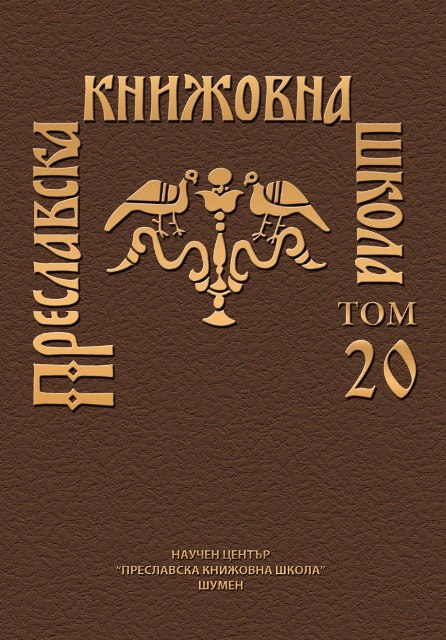ПАЛЕОГРАФСКИ ПРИНОС: ВИЗАНТИЙСКИЯТ ПЪРВООБРАЗ НА ПОДЧЕРТАНАТА „БЕТА“
PALEOGRAPHIC CONTRIBUTION: THE BYZANTINE PROTOTYPE OF THE UNDERLINED LETTER ‘BETA’
Author(s): Plamen OrfeevSubject(s): History, Language and Literature Studies, Cultural history, Middle Ages, 6th to 12th Centuries
Published by: Шуменски университет »Епископ Константин Преславски«
Keywords: Emperor Justinian I the Great; Underlined letter "beta"; golden solidus; the Ostrogoths Arians; golden solidus
Summary/Abstract: The underlined letter "beta" is to be found in the Byzantine paleography much earlier than the 9th century - e.g. the golden ring seal of Khan Kubrat in the treasure of Malaya Pereschepina (602), cup No. 20 in the Asparuh treasure of Nagyszentmiklós (693), the lead seals of khan Tervel (705), Umor (766) and Telerig (768). The earliest example is the mint golden solidus of Emperor Justinian I the Great, from the period 542-552. It was imprinted twice on the reverse side, with the characteristic letter "beta" in the Latin inscription CON (stantinopolis) OB (rizyacum). Above, the winged Victoria, presents the scepter of the Emperor and the shepherd’s staff to the Patriarch of Constantinople. The two insignias are depicted for the first time together and can be interpreted as a political and spiritual victory of Orthodoxy over the heresies in the context of Justinian's policy of reviving the Empire after the subjugation of the Ostrogoths Arians in 540.
Journal: Преславска книжовна школа
- Issue Year: 2020
- Issue No: 20
- Page Range: 102-111
- Page Count: 10
- Language: Bulgarian

